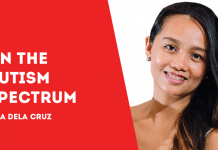
ONE in four adults in California has poor oral health, according to the University of California Los Angeles (UCLA).
Among the financially challenged, the number goes up to one in two. Among the rich, it goes down to one in five, according to the UCLA Center for Health Policy Research.
The UCLA research on the role economic, social and environmental factors play in oral health shows significant differences in oral health across income, education, employment, immigration status, and other categories.
In a policy paper, the research reveals the crucial influence of social factors. It shows that poor oral health is not simply the lack of access to dental care.
“Few studies have examined the role of social determinants of oral health,” said Nadereh Pourat, the lead author of the policy briefing paper.
“Our study found striking disparities in oral health status when we examined a broad array of socioeconomic and environmental factors, with income being the most influential of these indicators.”
Using data from the UCLA Center for Health Policy Research’s 2017 and 2018 California Health Interview Surveys, the study found that poor oral health was more common among adults who had no dental insurance (32 percent) compared to those with private insurance (16 percent).
Disparities were also found among those with no college education compared to college-educated residents; immigrants compared to United States-born residents; those with limited English proficiency vs. English-proficient residents; those who were food-insecure vs. those who weren’t; and those who lived in neighborhoods they considered unsafe vs. those in safe neighborhoods.
Obviously, disparities widened when the oral health of the poorest of the poor in California was compared with the rich.
Compared with white Americans, poor oral health is more common among older people, men, and those from communities of color, with Native Hawaiians and Pacific Islanders, Latinos, and American Indians, and Alaska Natives.
Poor oral health was more pronounced among those in the lowest-income group who were unemployed: 56 percent in the lowest-income group reported poor oral health, compared with 37 percent in the highest.
Those with a college education: 87 percent in the lowest-income group compared with 37 percent in the highest.
Immigrants: 57 percent in the lowest-income group compared with 31 percent in the highest.
Limited English proficiency: 47 percent in the lowest-income group compared with 13 percent in the highest.
Without a dental visit in the last year: 57 percent in the lowest-income group compared with 35 percent in the highest.
“Oral health should be included in screening tools for social needs,” said Maria Ditter, co-author of the research.
“This can be followed by providing oral health services to meet those needs by collaborating with providers and community-based organizations and bringing all necessary stakeholders to the table to address oral health needs.”
“Breaking barriers to oral health care and access will require multipronged approaches and systemic solutions that include promoting oral health education, literacy and expanding access to oral health care for adults,” Pourat said.
The researchers recommend applying strategies similar to those used to reduce oral health care disparities among children, such as oral health education and preventive services. /PN







